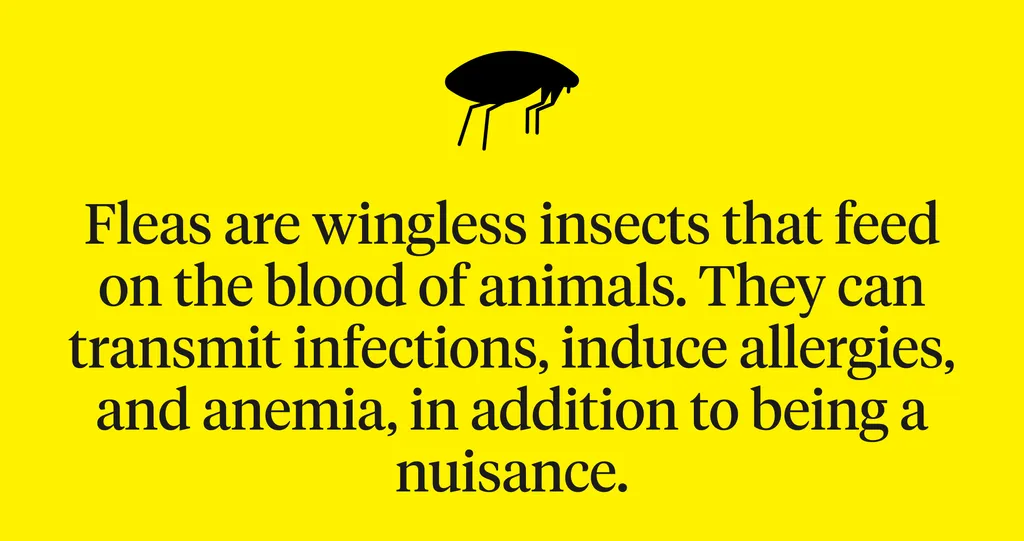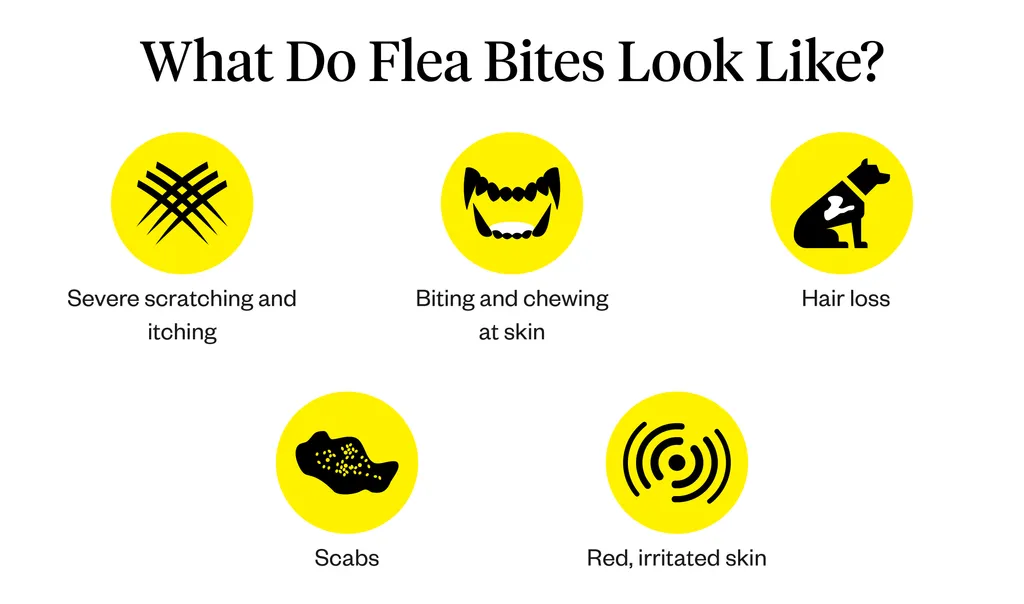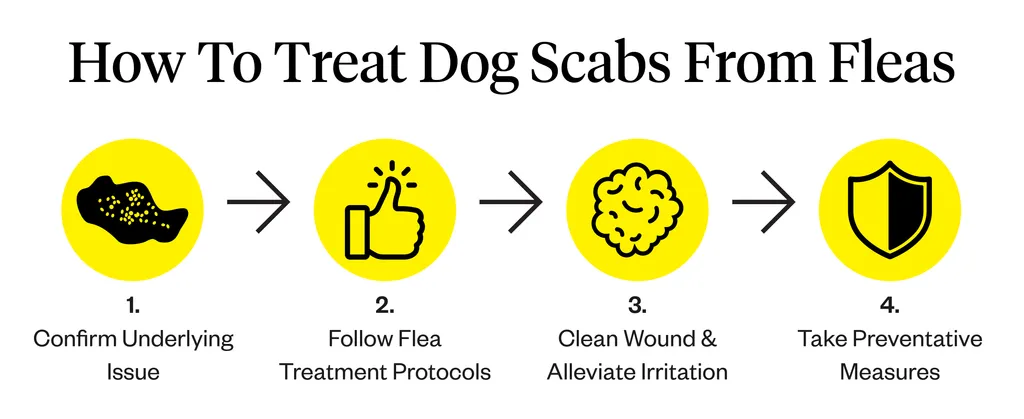Dealing with fleas is undeniably one of the most persistent challenges for pet owners. These tiny parasites not only multiply rapidly and jump between pets but also establish themselves in your home’s carpets, bedding, and pet toys, making eradication a daunting task. Beyond the nuisance, flea infestations can lead to painful scabbing and serious health issues for your beloved dog, including secondary infections and even anemia.
If your dog is suffering from flea scabs, you’re looking for answers and effective solutions. This guide will walk you through understanding flea infestations, how to recognize their impact on your dog’s skin, and most importantly, provide a clear, step-by-step approach on How To Heal Flea Scabs On Dogs, alongside comprehensive strategies for prevention. By the end, you’ll be equipped with the knowledge to protect your canine companion from these troublesome pests and restore their skin health.
Understanding Flea Infestations and Their Impact
Before diving into treatment, it’s crucial to grasp the nature of flea infestations and their specific effects on your dog’s well-being. Knowing your enemy is the first step toward effective management and healing.
What Exactly Are Fleas?
Fleas are minuscule, wingless insects renowned for their incredible jumping abilities. To survive, they require a blood meal, primarily from animals, though they can also bite humans. The fleas found on dogs are specifically adapted to thrive on canine blood. These irritating pests not only cause intense itching but also spread quickly to other animals, leaving a trail of discomfort. Beyond the immediate irritation, flea bites carry the risk of transmitting diseases, triggering allergic reactions, or, in severe cases, causing significant blood loss that can lead to anemia, particularly in puppies.
 Graphic defining fleas
Graphic defining fleas
The Cycle of a Flea Infestation on Your Dog
The life cycle of a flea is key to understanding how quickly an infestation can take hold. When a flea lands on your dog, it immediately seeks to bite and begin feeding – what’s known as a blood meal. Within one to two days of feeding, a female flea is ready to lay eggs. She continues to lay eggs (up to 50 per day, totaling nearly 2,000 in her lifetime) as she feeds and moves through your dog’s fur.
These tiny, whitish flea eggs are incredibly difficult to spot, especially on light-colored fur. Worse, they aren’t sticky and easily fall off your dog’s skin onto your carpets, bedding, furniture, or even outdoor soil. In less than six days, often much sooner, these eggs hatch into flea larvae. These larvae are mobile and will seek out “flea dirt” (flea droppings) and other organic debris for sustenance. This means a single flea-infested visitor or a walk through an infected patch of grass can quickly lead to a full-blown home infestation. As these eggs hatch and develop, your dog becomes a constant food source, and you might even start noticing bites on your own ankles.
The Root of the Problem: Flea Allergy Dermatitis (FAD)
While any dog can get fleas, some develop a more severe reaction known as flea allergy dermatitis (FAD). This common skin condition is an allergic response to substances found in flea saliva. When a flea bites your dog, it injects saliva as part of the feeding process. Unfortunately, this saliva contains allergens that can trigger an intense immune response in sensitive dogs. FAD is, in fact, one of the most common allergies pets can have.
Dogs with FAD will experience far more intense itching than from a regular bite. They might scratch, lick, chew, bite, or rub the affected skin almost ceaselessly, much like a person scratching an intensely itchy mosquito bite. If you observe crusted skin, especially around the tail base and hips, along with excessive scratching, there’s a strong likelihood your dog has FAD. This persistent irritation can quickly lead to scabbing and hair loss. If the dog breaks the skin from constant scratching and biting, these sites can become infected. Chronic scratching and untreated dermatitis can result in thickened, darkened skin and long-term hair loss. In very severe infestations, the cumulative blood loss from numerous fleas can cause anemia, particularly dangerous for puppies.
When it comes to keeping your dog healthy and happy, beyond treating specific issues, providing appropriate enrichment is key. For larger breeds, especially those prone to boredom or excessive chewing, investing in long-lasting dog chews for large dogs can be a great way to prevent destructive behaviors and support dental health.
Identifying Flea Bites and Scabs on Your Dog
While a fresh flea bite technically appears as a small, slightly raised red dot, you’ll most often find them after your dog has already started scratching. Therefore, look for reddened, irritated patches of skin that might also be scabby, often accompanied by thinner fur or even bald spots. The most common areas to check for these signs, alongside excessive scratching, chewing, and biting, are the hindquarters, especially around the tail, inner thighs, and abdomen.
 Graphic listing characteristics of a flea bite
Graphic listing characteristics of a flea bite
A Step-by-Step Guide to Healing Flea Scabs on Dogs
If you suspect your dog has fleas and is developing scabs, swift and systematic action is essential. Here’s how to heal flea scabs on dogs effectively.
Step 1: Confirming the Culprit
While continuous scratching and visible scabby, red skin are strong indicators of a flea allergy, these symptoms can unfortunately also point to other skin issues. It’s crucial to get your dog to a veterinarian promptly for an accurate diagnosis. Once your vet confirms that fleas are indeed the problem, they can recommend the most appropriate and effective flea treatment plan tailored to your dog’s specific needs and severity of the infestation. This initial vet visit also helps rule out other conditions like mange, fungal infections, or other allergies that might require different treatments.
Step 2: Implementing Comprehensive Flea Treatment
When it comes to flea eradication, “winging it” is not an option. Fleas are notoriously difficult to get rid of, and a half-hearted approach will only lead to their quick return. Follow your veterinarian’s instructions meticulously. A critical point often overlooked is that all pets in the household must be treated simultaneously, regardless of whether they show symptoms. If you only treat the visibly affected animal, fleas will simply jump onto the next untreated pet, allowing the infestation to continue its cycle. Your vet may prescribe oral medications, topical treatments, or a combination, all designed to kill adult fleas, eggs, and larvae.
For an added layer of defense, consider that many flea treatments also help protect against other parasites. While your dog might enjoy various treats, ensuring they are safe and healthy is paramount. Exploring options like dog chews that last a long time can be beneficial, as they not only provide entertainment but can also contribute to dental hygiene, which is crucial for overall pet health.
Step 3: Soothing and Healing the Affected Skin
The constant itching caused by flea bites and developing scabs will compel your dog to keep scratching, perpetuating the cycle of irritation and delaying healing. Even as the scabs heal, they can continue to feel itchy. Your focus now shifts to wound care and symptom management. Keep the affected skin moist, and avoid using harsh skin products that could worsen the irritation.
If you bathe your dog, use a mild, vet-recommended dog shampoo specifically formulated for sensitive or itchy skin. Rinse thoroughly to ensure no residue is left behind, as this can cause further irritation. Daily checks of your dog’s skin are essential to monitor for swelling, increased redness, pus, or warmth, which are all signs that a secondary bacterial infection might be developing and requires immediate veterinary attention. Your vet might also prescribe topical ointments, medicated sprays, or even oral anti-inflammatories to help reduce itching and promote healing.
 Graphic showing 4 steps to treat dog scabs from fleas
Graphic showing 4 steps to treat dog scabs from fleas
Step 4: Preventing Future Flea Infestations
Fleas are not only hard to eliminate but also notorious for returning if preventive measures aren’t consistently applied. Whether or not your dog is allergic to flea saliva, preventing future infestations is key to their long-term health and comfort. This involves a two-pronged approach: treating your pet and treating your home environment.
Pet Treatment: Maintain a consistent flea prevention regimen for your dog and any other pets. This could involve monthly topical treatments, oral medications, or flea collars recommended by your vet. Consistency is vital, as even a short lapse can open the door for a new infestation.
Environmental Treatment: If you treat your pet but neglect your home, fleas residing in carpets, bedding, and crevices will quickly re-infest your dog.
- Vacuuming: Thoroughly vacuum all carpets, rugs, and upholstered furniture. Pay special attention to areas where your pet spends most of its time and use a crevice attachment to reach baseboards and corners. Immediately dispose of the vacuum bag contents outside your home in a sealed trash bag.
- Washing: Wash all pet bedding, blankets, and any washable upholstery in hot water with detergent. This heat helps kill fleas and their eggs.
- Outdoor Areas: Clean out anything your dog uses outside, such as outdoor chairs or kennels, as fleas can thrive in these environments.
- Professional Help: In severe cases, you might consider professional pest control services to treat your home for fleas.
When to Seek Professional Veterinary Care
While the steps above provide a robust framework for how to heal flea scabs on dogs, it’s vital to recognize when professional veterinary care is non-negotiable. Always consult your vet if:
- Scabs worsen or don’t heal: Despite your efforts, if the scabs show no improvement or appear to be getting worse, a vet visit is necessary.
- Signs of infection: Look for pus, strong odor, increased swelling, heat, or fever. Secondary bacterial infections can be very serious.
- Severe hair loss: Extensive hair loss might indicate a more severe allergic reaction or another underlying condition.
- Lethargy or weakness: In severe infestations, especially in puppies, significant blood loss can lead to anemia, causing weakness, pale gums, and lethargy. This is a medical emergency.
- Difficulty managing itching: If your dog is still scratching relentlessly, your vet can prescribe stronger anti-itch medications to provide relief.
 Pet owner treating dog for fleas
Pet owner treating dog for fleas
Final Thoughts
Fleas are more than just a nuisance; when your dog develops an allergy to their saliva, leading to scabs and intense itching, it can be a source of significant pain and discomfort for your pet. Understanding the flea life cycle, recognizing the signs of flea allergy dermatitis, and knowing how to heal flea scabs on dogs are crucial skills for any responsible pet owner.
If you suspect your dog has fleas and observe scabs, do not delay. Take prompt action to establish a comprehensive treatment and prevention plan. Early intervention not only alleviates your dog’s suffering but also prevents the infestation from escalating and causing more severe health issues. Always remember that consulting your veterinarian is the best first step to ensure your dog receives the most appropriate and effective care.
For those considering adding a new puppy to their family, understanding how to keep them engaged and well-behaved from a young age is vital. Learning what is the best treat for puppy training can set you up for success, ensuring your new companion develops good habits while staying healthy.
References
- Dr. Zach Coston, DVM. (Medically reviewed information for the original article).
